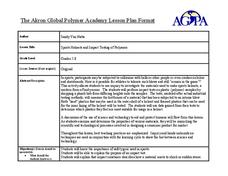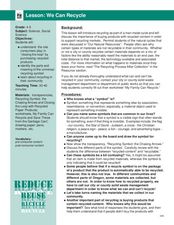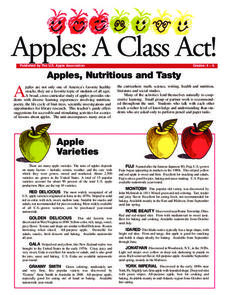Curated OER
Permit Trading
Emerging environmentalists work in groups and pretend that each is a power company generating electricity for a community. They consider the costs of building a renewable electricity generator that will increasingly replace generating...
Curated OER
Sports Helmets and Impact Testing of Polymers
Students examine the importance of good quality safety gear. In this investigative lesson, students will tests various polymers, collect data, and analyze the data to determine which polymer is best for safety helmets. They will design a...
Chymist
Determination of the Volume of CO2 in Pop Rocks
Where does the pop in pop rocks come from? An engaging activity asks scholars to measure the amount of carbon dioxide in a package of Pop Rocks candy. Learners dissolve the candy in water and use the solubility of CO2 to determine its mass.
Curated OER
We Can Recycle
Students analyze the symbol for recycling. In this recycling lesson, students define and identify various symbols and draw the symbol for recycling. Students investigate ways to keep natural resources in the recycling loop.
Curated OER
Products Made from Petroleum
Young scholars research products made from petroleum. In this transportation lesson students try to find products other than fuel, made from petroleum. They look for the most unusual or surprising products and describe the history and...
US Apple Association
Apples: A Class Act! (Grades 4–6)
Middle schoolers have a bushel of fun as they engage in activities and research core facts about apples. Packed with suggestions for in-class activities and out-of-class research, the colorful 6-page packet is sure to satisfy hungry...
Curated OER
Preying on Beans
Students act as predators searching for prey (beans) in two different settings to demonstrate the processes of adaptation and selection.






